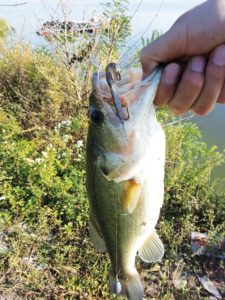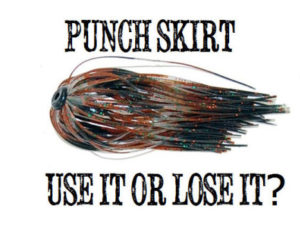If you have been paying attention to the hottest Bass fishing rigs, you have likely heard of the Japanese Inu rig for Bass fishing. It is more complicated than most plastic worm rigs, but rigging the Inu is actually pretty easy if you have all the right pieces and completely worth the effort. Below is the basic information on tying up the basic Inu rig. After that, are some suggestions for improving the Inu rig.
Material For the Inu Rig
How to Tie the Inu Rig
Step 1 – Cut your tube at an angle.
Cut your coffee stirrer or other tube at an angle so it has a point. This will make it easier to push through your worm.
Step 2 – Skewer your worm
Push your tube through the worm above the egg sack at an angle of about 30 degrees. Then thread it through again at that same angle below the egg sack. Finally, one last time through the worm near the tail, making an S shape out of it.
Step 3 – Secure your tubing
Place a drop of super glue onto the straw and then slide your worm over it. Do this for all three sections. Once dry, clip off the tube, just above flush with your worm.
Step 4 – Tie on our hook
Thread a wacky rig hook onto your line, then thread the line through your tubing and tie the loose end off to the split ring, being sure to keep your knot out of the opening for the ring. Then skin hook your worm, being sure to line up the eye of the hook with your first tube.
Be sure to check out the improvements for tying on your hooks below for what I think is a better way to do this.
Some Improvements to the Inu Rig
Right off the bat, I can see that skin hooking the worm is going to tear it up pretty quickly. There are some easy improvements to the Inu rig that make it more fishable and a little more durable.
I think the most important one is to use an O-ring instead of skin hooking your worm. This should improve the survivability of your bait, as well as making it easier to line the first tube up with the eye of the hook.
The other change to consider is tying on a stinger hook to help with those myopic Bass that bite short. A weedless hook on the bottom can help with that situation.







